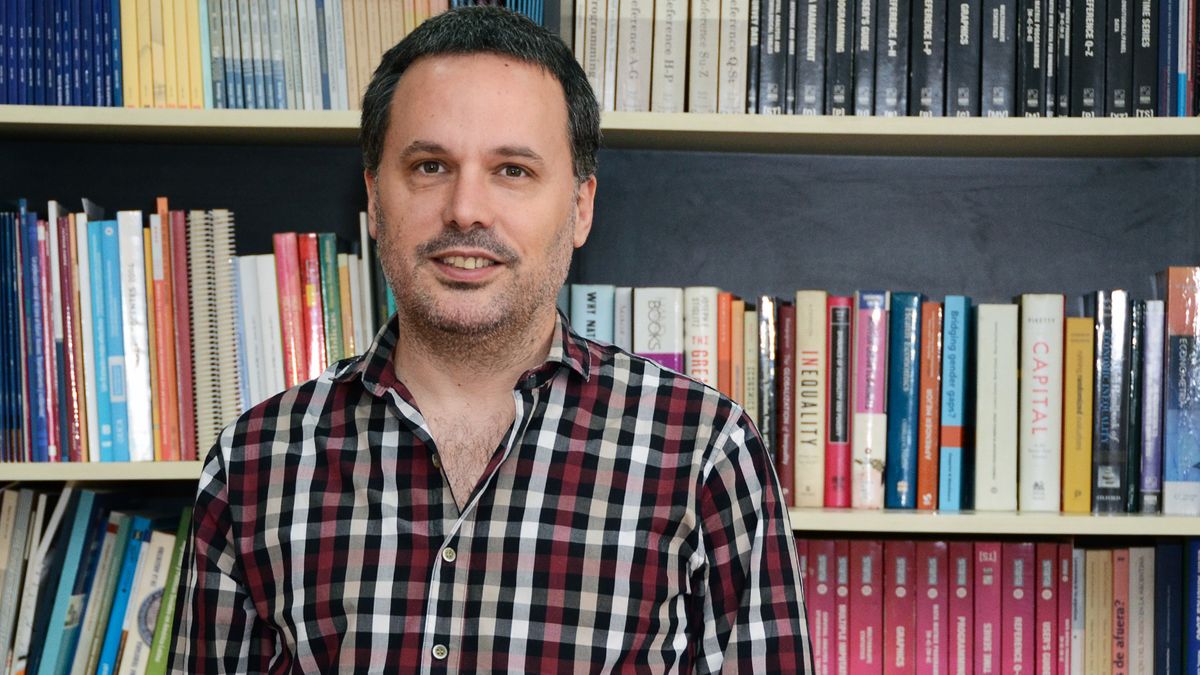After a year marked by economic recession and deterioration in income, the Ministry of Human Capital, the Social Debt Observatory of the Argentine Catholic University (UCA) and professionals such as Leopoldo Tornarolli recently assured that Poverty between the second and third quarters had decreased.
For this reason, Ámbito spoke with Tornarolli, an economist at CEDLAS-UNLP, who understands that the main factor that explains the decrease in poverty is the reduction of inflation, while the evolution of the basic basket below the general price index “amplified the effect”. At the same time, it considers that poverty could fall to lower levels than in the second half of 2023, but “definitely” there will be no continuation of “this sharp decline trend” which was observed in the third quarter.
Leopoldo Tornarolli.: It was expected that poverty would decrease compared to the last data we knew. During the first semester we had a fairly big jump, but all the indicators that were circulating made me think that poverty was going to decrease, that is, that the peak of the crisis had been recorded in the first semester, although my initial impression was that it was going to intensify in the second. Then, with the drop in inflation in the second quarter, it was expected that this would extend to the third, but the magnitude of the drop to values similar to the time Milei took office was surprising.
The main explanation is the sharp drop in inflation; what was unexpected was its deceleration. At the same time, between the first quarter and the third you have some recovery in activity, but above all it is explained by the drop in inflation that gives you a gain in terms of poverty reduction.
The other factor that accompanied and amplified the effect of lower inflation is that poverty is not measured by general inflation, but rather by the basic food basket for indigence and the total basic basket for poverty. Both indicators fell well below inflation from May onwards. Average income may be losing purchasing power compared to inflation, but it adds up compared to the baskets.
Q: What happens with the comparison of the third quarter on a year-on-year basis? Why is there no decrease in poverty in this period?
LT: You don’t have a drop between third quarters, you have almost the same value. That is, between the third quarter of 2023 and the third quarter of 2024, the poverty value would be almost the same, that is, 38.6% versus 38.1% as we estimate at the moment. The explanation lies in the decrease in inflation and especially in food, which were below the general CPI, because, in reality, in terms of activity you are still below the third quarter of 2023.
The other issue is methodological. If you ran the basket one month, poverty in the third quarter would have been four points higher than the third quarter of the previous year. There is an intermediate thing, if one could look at when interviewing each individual and could look at the basket at that moment, the distance would not be four points but it would not be the same either, possibly with a perfect measurement (no country has it) perhaps the Poverty would be a couple of points higher in year-on-year terms, something quite in line with the level of activity in the third quarter.
Q: Is there a risk that poverty will rise again in the fourth quarter?
LT: I don’t think so, maybe a little bit, because you have an artificial effect because in the fourth quarter you don’t have the bonuses. In the first quarter and in the third you have the bonuses, because as asked regarding the previous 30 days, the bonuses are reported in January and July in the survey. That is, those interviewed in January talk about the bonus received in December, while in July they talk about the June bonus.
Likewise, the trend of the other indicators, of downward inflation, of the partial recovery of the level of activity and so on, will most likely compensate for that, and then it is quite possible that the level of poverty that you get in the fourth quarter will be very similar to the third one. That would then mean that the year would close with a level of poverty lower than that of the second half of 2023, but what you will definitely not have is a continuation of this trend of sharp decline that was observed in the third.
You will no longer have all that gain that you had due to the recovery or the fall in inflation in the fourth quarter. In other words, they have already taken a large part of that path of gain in terms of reducing poverty and reducing inflation. Although you still have two points and some inflation and you can go lower, you should go lower, that is not going to bring you a great gain in terms of poverty. From now on, the falls in poverty will be explained mainly by the recovery of wages related to improvements in the level of activity.
Q.: Looking at income, do you consider that this reduction in poverty benefits the poorest (first deciles) or in which deciles do you find a greater impact?
LT: Those where income improved the most are the indigent, they are people who do not escape poverty, but their economic situation does improve.
In those cases you have a combination of improvement in informal income plus the increase in the real value of state transfers, especially AUH and Alimentar Card, which in real values beat inflation. Then in the intermediate deciles you have a situation a little more similar to what happened with inflation compared to a year ago, where purchasing power was more or less maintained and in some of the upper deciles there was also gain, but I think that those who had the most cattle were effectively the bottom deciles.
For this reason, I did not speak about indigence, but others did estimate that indigence will also fall even more strongly than poverty, just as at the time it had risen even more strongly than poverty, indigence will also fall strongly because those deciles gained more than the others in the comparison. Indigence will also fall harder because the basic food basket rose much less than the total basic basket, which in turn rose less than the general CPI.
Q: Do you consider the reduction in recorded poverty sustainable? What would have to happen for it to continue declining?
LT: From now on, for poverty to go down, the economy must grow. Perhaps it can go up to 35% or 34% continuing with this drop in inflation, but for it to be a sustainable process for many years, you have to grow, something that Argentina has not done sustainably since 2010. So, what you need is in reality several years of growth, to break the poverty floor, which is on the order of 25%. In that sense, the macroeconomic order and the reduction of inflation are requirements but not sufficient conditions. If you do not grow, if economic activity is not reactivated, if you do not begin to generate more registered employment, surely that is not going to happen.
The Government obviously considers that this goes hand in hand with the functioning of the market, ensuring conditions of macro stability. The question is whether the Government can effectively sustain that stability. Personally, I still don’t see enough signs to understand if it’s definitely sustainable or not.
Source: Ambito
I’m a recent graduate of the University of Missouri with a degree in journalism. I started working as a news reporter for 24 Hours World about two years ago, and I’ve been writing articles ever since. My main focus is automotive news, but I’ve also written about politics, lifestyle, and entertainment.




